
I help gardeners grow
& beginners blossom.
No seed left behind,
no soil unturned.
Together we can have lots of fun growing
great gardens using simple practical tips.
- Featured in -





Start saving & storing your garden seeds for a more more sustainable future
SIGN UP to get the FREE Seed packet PDF
X CLOSE
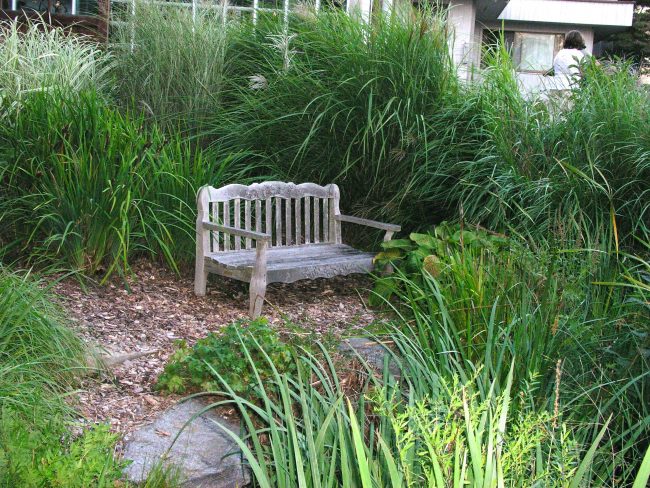
How Much Mulch Do Trees Need?
How Much Mulch do Trees Need?
I felt like a fraud last week. I was having dinner with Dr. Linda Chalker-Scott from Washington State University (WSU) and she was correcting my understanding of wood mulch depth around trees. For years I have been insisting on 4 inches (10 cms) of wood mulch at the base of trees in new landscape installations. She was disputing that.
Are you using wood mulch? How much mulch is the right amount for your trees? You may be surprised.

Coarse wood mulch is made up of variously-sized pieces and new information says we need more not less of this valuable yet often free product.
I feel like I am repeating myself endlessly but I insist on wood mulch for all landscape installations. Call me crazy but planting trees that will survive and thrive depends on the addition of mulch and my favourite material is the coarse free wood mulch you get from Arborists. Imitating nature with a layer of mulch lets the natural system of organic decomposition protect and shelter tree roots while holding water and gradually adding nutrients to the soil. Like a sippy-cup and slow food combined, mulch keeps trees and landscapes healthy and protected. But what I found out on Sunday is that more mulch is better – I think.
I am talking to Dr. Chalker Scott and she is telling me I might not be using enough mulch so I am confused. I check in with the organization in charge of training and certifying staff who look after our trees – the International Society of Arboriculture (ISA). It suggests less mulch is better. I read that the right amount of mulch is 5 -10 cm (that’s 2- 4 inches in the USA). One ISA study says “that the current recommendation for mulch depth of 7.5 cm is appropriate. Soil oxygen levels, temperatures, and moisture levels are all within acceptable ranges under a mulch of this depth.”

When wood mulch is screened so it is all one size it tends to blow away and leaves only a skim of woody material on the surface. This shrub bed with the mugo pine needs a lot more mulch on top of the soil.
Then I google Dr. Chalker-Scott’s new fact sheet on wood mulch. It says the correct amount of wood mulch on beds is 4-6 inches. Pretty close to what I suggest.
But at the dinner Chalker-Scott tells me her latest work shows that coarse wood mulch is better at depths of up to 18 inches…. and that is a crazy huge jump from what I normally suggest to gardeners. I quickly run home and search for references to confirm what Chalker-Scott has told me and I can’t find them. I speak with my daughter Chelsie who works every day in landscape installation and maintenance and we both shake our heads. This number seems so big it is sure to crush or kill all the smaller plants trying to get established under trees. The extra revelation Chalker-Scott makes is that wood mulch trials are stacking mulch against trees and this is also against everything I believe and have read. In fact it is the opposite of what Chalker-Scott has already published.

When rock is used as a mulch it can’t feed the trees because rocks don’t decompose that way. In fact rocks as mulch often become weedy patches. Can you see the weedy grass growing up in these rocks?
Garden consultants have been saying repeatedly that piling wood against trees will damage the bark because the sitting water and the action of the organisms living in the mulch on the living tissue damages the trunk. Chelsie has also noticed dark stains and damage on wood where it is piled with wood chips but this is anecdotal and not part of a scientific study. Chalker-Scott tells me the new studies have deliberately sliced into bark and then buried the trunk with bark and the trunk has repaired itself. Like a band-aide on bark, wood chips have repaired injured tree trunks in recent (but still unpublished) studies.
So there is nothing left to do but email Dr. Chalker-Scott for more information and she is quick to reply by email.
“I don’t like or recommend bark mulch. I prefer fresh arborist wood chips as they actually absorb water, support mycorrhizae, and break down faster. That’s why you have to put a thicker layer down initially. Within a month an 8” layer of mulch will be 4”. It must be maintained at 4” to keep weeds from germinating.
Second, I don’t recommended 18” of mulch or piling it against the trunk. What I said is that research (not mine, and not yet published) has shown that thick layers of coarse wood chips will not interfere with water or gas movement. And that wounded trees with arborist chips piled around the trunk and covering those wounds seal faster than trees without the mulch. Until these research studies are published I can’t recommend doing either one. But there is absolutely no research demonstrating injury from either practice, either. Unfortunately erroneous online columns perpetuate that latter perception without providing evidence (I talked about that here last year.)
[Finally] I do have an article that looks at 10, 20 and 30 cm of wood chips mulches and tree health. I’m revising it again for publication and hopefully I can get it out next year. (Spoiler alert – the deeper the mulch the healthier the trees as long as the mulch was coarse. Fine textured mulches are the opposite.)”
So in fact I heard wrong – sort of – and in fact until the latest information is published we can keep adding fresh coarse wood chips in layers as deep as 8″, allowing them to settle to 4″ and then maintain them there. I agree with Chalker-Scott that trees and landscapes need wood chips and the ones you can get free from arborists are the best even if they are coarse and possibly diseased and erratic in size and source. The mixed loads with leaves and bark and wood are ideal for the trees they are sheltering. At this time of year, just before the big snows of winter, start looking for and spreading this free mulch from arborists whenever you can find it.
So I guess I am not a fraud. Until the new research is published I will continue to suggest tree and shrub beds need 10 cm of coarse loose mulch. You can always add more later to keep it to a depth of 4″. And seriously? Where are you going to get that much mulch anyway? It is getting tougher to get the really great free stuff because everyone wants it. In good news anything you do get at this time of year probably includes evergreens and the smell of evergreens chopped and dropped on the soil at your feet is delightful and special.
On the topic of tree care Dr. Chalker-Scott has some exciting news. “A professor from University of California and also with an Extension appointment and I are publishing a myth-busting article about landscape tree care at the end of the year in the NACAA Journal. I’ll be announcing when that comes out in our FB Garden Professors blog group.”
Tell me what you are mulching with by replying here now. I love your feedback and ideas.

This poor tree didn’t get any mulch at all and was planted in a whole where it died from sitting water. Dead by the first spring it is not an example to emulate.

Bark “nuggets” never make a good substitute for wood chips and bark over landscape fabric is a shortcut to disaster because as the chips blow away and the fabric lifts it is ugly and of no help to the tree.

Donna Balzer is the Brand Ambassador for BCGreenhouse Builders and she has two greenhouses in her big backyard.

What Would Donna Do?
Get my growing and gardening tips and pointers throughout the season.





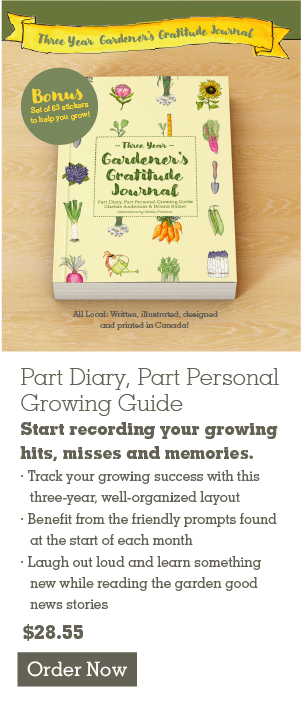






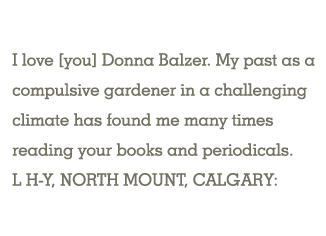
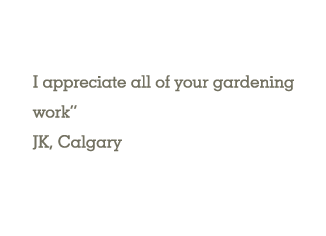

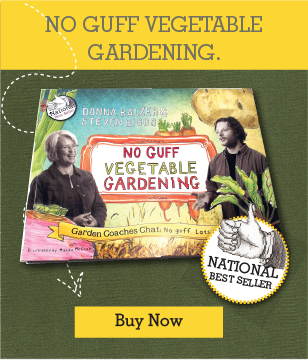
You are so right on Elaine. Never enough to go around! What kind of chipper do you have?
You are right. Bees are getting an exudate from the mycelium. I learned this from a workshop I attended a few years ago. It all reminds me – yet again – how connected we all are.
You are so right Michelle. It’s like a miracle product for gardens. And I agree – I was taught 4″ but that’s why this new research is so interesting. Thanks for following along.
Yay! I have some big piles in my yard ready to use soon!
I am definitely a believer in mulch! Thanks for your effort.
I am also a big believer in Mulch and its ability
to cool roots, retain moisture, and keep weeds at bay. I am however fascinated by this new development as I have always been taught
not to over mulch ie no more than 4″ and not to have the Volcano effect (large mulch hill creeping right up the Tree trunk)
I am definitely a believer in mulch! We were able to get a huge truckload from an arborist-it is definitely more popular now, but they put us on a waiting list and we had a pile of it within a couple of weeks. We’ve spread it around all of our perennials, fruit trees and shrubs, and we use it for pathways in the vegetable garden. While everyone else is watering their plants during summer’s heat, we rarely have to. We’ve found that the bees like the mulch too. Bumblebees make burrows and overwinter, and our honeybees must be getting something beneficial from the mulch too, either propolis or maybe fungal spores (there is research coming out that the bees will self-medicate using mycorrhizal fungi for the immune system of the hive body).
HI Donna,
Much like compost there is never enough mulch to go around on our acreage. I use everything our ‘chipper’ puts out, scrounge old leaves from neighbours (spread them out and top with a bit of compost), purchased and free bark mulch, pesticide-free grass clippings and old straw/hay. Anything organic works as long as you keep topping it up
Thanks for your perspective and I gotta let you know I agree. And I see on all of Dr. Chalker-Scott’s info she also agrees but she anticipates the new research soon… and it could change out thinking. I was especially interested in how bark hilled up healed scars cut into the bark. But she repeated to me that this research is not published yet. I will follow this with interest.
Trees don’t have 18″ of mulch surrounding them in their natural forest environments, nor do they have mulch volcanoes piled up on their trunks – I simply can’t see how either would be beneficial. The main purpose of mulching trees is to conserve moisture, minimize weed competition and allow for some slow nutrient leach into the soil – 4″ of mulch does those jobs and I can’t see how piling on another foot of mulch would be any better. The only way I “might” be convinced is if there were a few studies comparing trees planted and raised using both methods where the 18″ volcano is clearly shown to be superior. But that’s just my opinion 😉